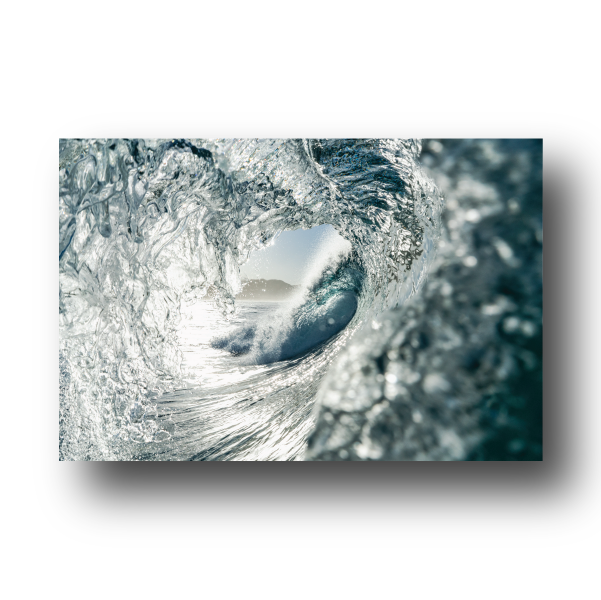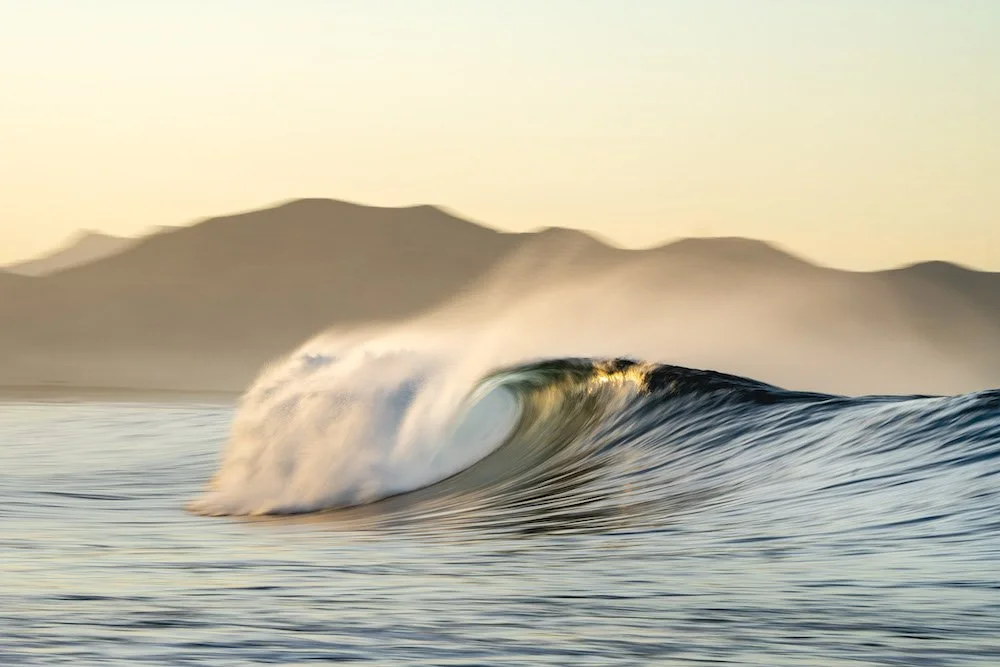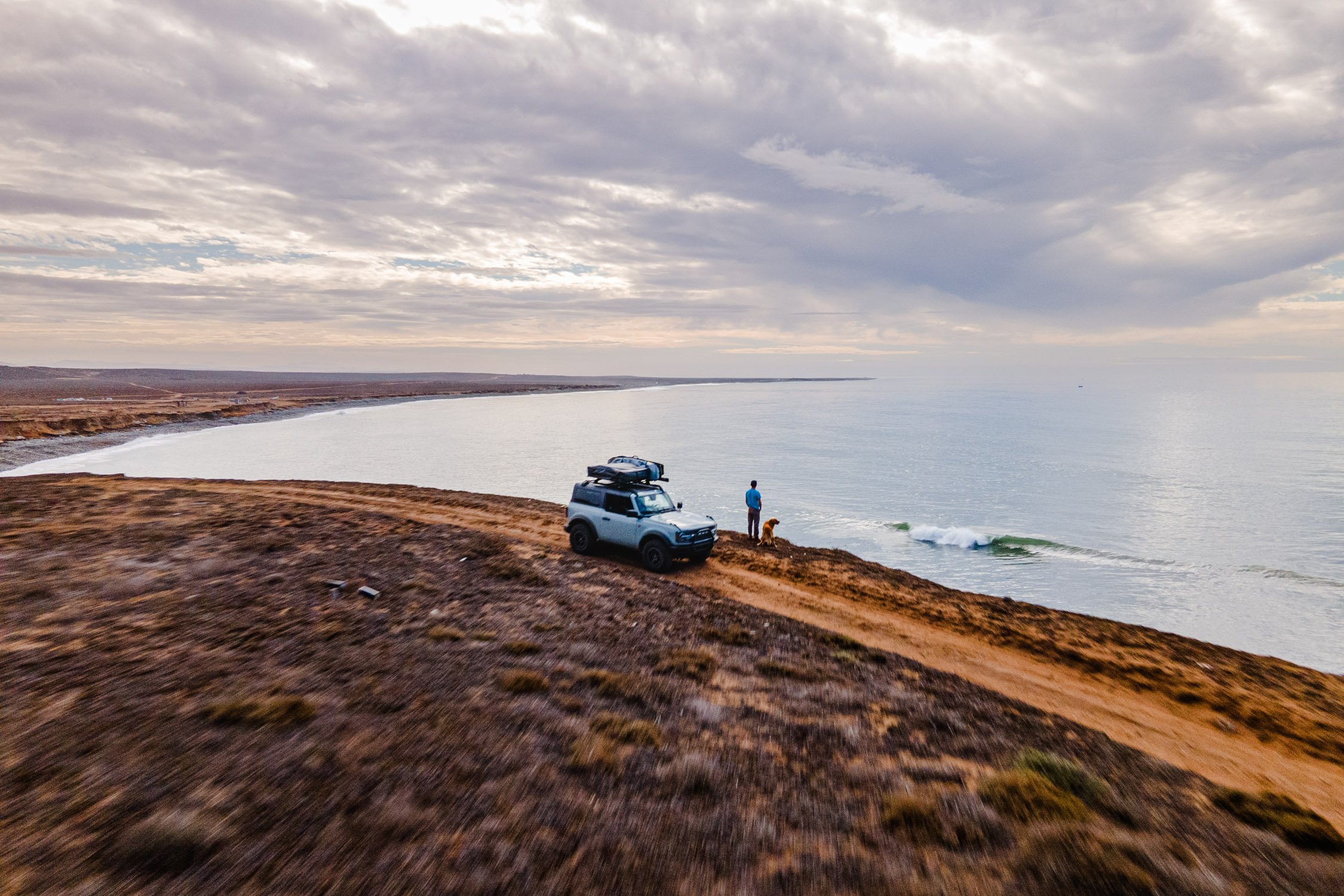Baja California, located along the beautiful coast of Mexico, is renowned for its stunning beaches and world-class surfing conditions. From beginners to seasoned professionals, surfers from around the globe flock to Baja to ride its legendary waves. However, timing plays a crucial role in ensuring the ultimate surfing experience.
The best time to surf in Baja, Mexico varies depending on your skill level and preferences. Winter (November to February) offers powerful swells for experienced surfers, while spring (March to May) provides a balance of wave quality and favorable weather. Summer (June to September) is ideal for beginners with smaller, mellow waves, while fall (October) offers a mix of different wave conditions to cater to surfers of various skill levels.
In this blog post, we'll explore the best time to surf in Baja, taking into account the factors that contribute to optimal wave conditions.
Finding a solo peak while surfing in Baja Sur. Photo by Dalton Johnson
Pros
World-Class Waves: Baja is renowned for its world-class waves, attracting surfers from around the globe. Whether you're a beginner or an experienced rider, Baja offers a wide variety of breaks suitable for all skill levels.
Beautiful Scenery: Baja's coastline is blessed with breathtaking natural beauty. From stunning beaches to rugged cliffs and desert landscapes, the scenery adds an extra element of enjoyment to your surfing experience.
Uncrowded Waves: While Baja is a popular surf destination, it still offers plenty of uncrowded breaks, especially if you venture away from the more touristy areas. You can find secluded spots where you can enjoy the waves without the crowds often associated with other popular surf destinations.
Affordable Travel: Compared to some other well-known surf destinations, Baja offers more affordable travel options. This makes it an attractive choice for surfers on a budget, as you can find reasonably priced accommodations, dining options, and surf camps.
Cultural Experience: Baja provides an opportunity to immerse yourself in Mexican culture. From delicious local cuisine to vibrant festivals and friendly locals, you can enjoy a unique cultural experience alongside your surfing adventures.
Cons
Crowds in Popular Spots: While Baja offers uncrowded breaks, some popular spots can become crowded during peak seasons, particularly around well-known surf breaks and tourist areas. This can lead to competition for waves and a less peaceful surfing experience.
Inconsistent Wave Conditions: Baja's wave conditions can be inconsistent at times, especially during the summer months when swells tend to be smaller. Depending on the time of year and specific locations, you may encounter days with less-than-ideal surf conditions.
Water and Weather Factors: Baja's water temperature can vary throughout the year, requiring the use of wetsuits during colder months. Additionally, strong winds can be a factor, affecting wave quality and making certain surf spots less enjoyable.
Limited Amenities in Remote Areas: Baja is known for its vast, untouched landscapes, but this also means that some surf spots are located in remote areas with limited amenities. Accommodations and facilities may be basic, and access to services such as restaurants, shops, and medical facilities can be limited in certain regions.
Seasonal Considerations:
Baja California experiences distinct surf seasons, each offering unique advantages and challenges. Understanding these seasonal patterns will help you plan your surf trip effectively.
Winter (November to February):
Winter brings powerful swells and larger waves to Baja. If you're an experienced surfer seeking challenging conditions, this is the time to visit. The Pacific coast witnesses massive swells generated by winter storms in the North Pacific, creating powerful, hollow waves that attract experienced surfers. However, it's important to note that winter swells can also be accompanied by colder water temperatures, so make sure to pack a wetsuit.
Spring (March to May):
Spring is an excellent time for intermediate and advanced surfers to visit Baja. As winter transitions into spring, the ocean swells become more consistent, and the water begins to warm up. This period offers a great balance of wave quality, size, and favorable weather conditions. Additionally, the crowds tend to be smaller compared to the peak winter months.
Summer (June to September):
Summer is ideal for beginners and those looking for smaller, mellow waves. The Pacific Ocean's swells tend to decrease during these months, making the waves more manageable for less experienced surfers. Baja's coastline also benefits from south swells generated by hurricanes in the southern hemisphere, providing additional surf opportunities. Warm water temperatures and sunny weather make it a pleasant time to explore the region, but be prepared for occasional afternoon winds.
Fall (October):
Fall marks the transitional period between summer and winter, offering a mix of both worlds. While the summer swells begin to fade, the winter swells gradually start to arrive, resulting in a diverse range of wave sizes and conditions. Fall can be an exciting time to surf in Baja, catering to surfers of various skill levels.
Local Factors:
Apart from seasonal considerations, several local factors can impact the quality of waves in Baja. Familiarize yourself with these elements to make the most of your surfing adventures:
Swell Direction and Size: Baja's coastline is exposed to swells from different directions, leading to variations in wave quality across its numerous breaks. Pay attention to the swell direction and size forecasts, as they determine which surf spots will be firing at a given time. Websites, surf reports, and local knowledge can provide valuable information to help you choose the right beach for the day.
Tides: Understanding the influence of tides is crucial for selecting the optimal time to surf. Some surf spots in Baja work best at low tide, while others prefer high tide. Research the tide charts or consult local surfers to identify the ideal time to hit the water.
Wind Conditions: Wind greatly affects wave quality. In Baja, the early morning hours often provide clean offshore conditions with lighter winds. As the day progresses, the wind may pick up, creating choppy or blown-out waves. Plan your surf sessions accordingly, aiming to be in the water during the optimal wind window.
A perfect sunrise barrel unridden in Baja, Mexico. Photo by Dalton Johnson
Determining the best time to surf in Baja depends on a variety of factors, including the season, local conditions, and your skill level. Whether you seek the thrill of challenging winter swells or the mellow waves of summer, Baja offers something for everyone. Researching local surf reports, monitoring swell forecasts, and seeking advice from experienced surfers will greatly enhance your chances of scoring epic waves. So pack your board, wax up, and get ready to ride the exhilarating waves of Baja California.








